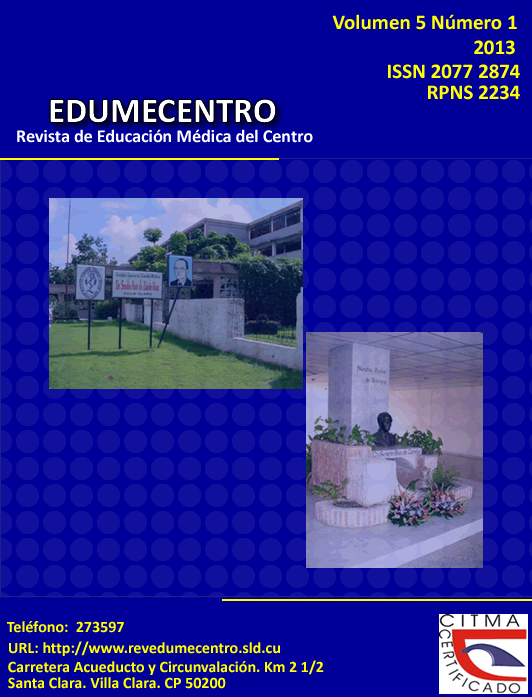The educative software in the teaching-learning process of the History of Cuba discipline
Keywords:
Educative software, teaching aid, teaching-learning process.Abstract
The diagnostic study carried out by the professors of the History of Cuba discipline in the Health Technology Faculty in Villa Clara detected the necessity of teaching literature, bibliography and material aids to facilitate the comprehension of contents present in the History of Cuba subject which affect the teaching-learning process. Theoretical and empirical methods were used, for instance, from the abstract level to the concrete one, historical logical, systemic–structural, inductive–deductive, analytical–synthetically and modeling; analysis of documents, observation, interview and surveys. According to their results it was elaborated a multi-media educative software ”Cubanahis” which serves as a class teaching aid, the independent study and bibliographic support of the subject, besides, it facilitates the assimilation and comprehension of difficult contents and the grasping of a meaningful learning.Downloads
Download data is not yet available.
Published
2013-02-19
How to Cite
1.
Vázquez Pérez JA, García Ferrer G, Rodríguez Gómez M, Marín García R. The educative software in the teaching-learning process of the History of Cuba discipline. EDUMEC [Internet]. 2013 Feb. 19 [cited 2025 Dec. 17];5(1):21-9. Available from: https://revedumecentro.sld.cu/index.php/edumc/article/view/207
Issue
Section
ARTÍCULO ORIGINAL
License
Los autores que publican en esta revista están de acuerdo con los siguientes términos:- Los autores/as conservarán sus derechos de autor y ceden a la revista el derecho de primera publicación de su obra, el cuál estará simultáneamente sujeto a una Licencia Creative Commons Reconocimiento-NoComercial-CompartirIgual 4.0 Internacional (CC BY-NC-SA 4.0) que permite a terceros compartir la obra siempre que se indique su autor y su primera publicación esta revista.
- Los autores pueden establecer por separado acuerdos adicionales para la distribución no exclusiva de la versión de la obra publicada en la revista (por ejemplo, situarlo en un repositorio institucional o publicarlo en un libro), con un reconocimiento de su publicación inicial en esta revista.
- Se permite y se anima a los autores a difundir sus trabajos electrónicamente (por ejemplo, en repositorios institucionales o en su propio sitio web) antes y durante el proceso de envío, ya que puede dar lugar a intercambios productivos, así como a una citación más temprana y mayor de los trabajos publicados (Véase The Effect of Open Access) (en inglés).










